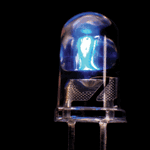Center for Nanophotonics
Contacts
| Edward E. Whitacre Endowed Chair | Hongxing Jiang, Ph.D. | hx.jiang@ttu.edu |
| Linda Whitacre Endowed Chair | Jingyu Lin, Ph.D. | jingyu.lin@ttu.edu |
| Main Phone | 806.742.3533 x256 or x253 | |
| Web Address | http://www2.ece.ttu.edu/nanophotonics/ |
Purpose
The Center for Nanophotonics at TTU is a focal point in Texas for conducting innovative research and development on active nano-scale photonic materials and devices (devices that convert light to electricity or vise versa). The Center's research areas cover a broad spectrum — ranging from basic to applied — and dealing with state-of-the-art nano-scale material synthesis, device processing and fundamental physics. In particular, the Center's research works have significantly advanced the fundamental understanding of III-nitride wide bandgap semiconductors (GaN, AlN, AlGaN, InGaN, and InAlGaN) and their applications (these materials promise to be effective in producing renewable energy and light more efficiently).
Research Focus
The Center's current research activities include the creation of photonic devices (light emitting diodes, laser diodes, detectors, sensors) active from infrared to visible to deep/extreme UV, optical amplifiers, solar cells, thermoelectric devices, and photoelectrochemical cells. The Center is exploring applications of nanophotonic devices for emerging technologies in the areas of high efficiency solid-state-lighting, renewable energy generation and storage, security, optical communications, health and medical care, and entertainment. The Center's facilities are among the best in the world for micro- and nano-fabrication of photonic materials and devices based on III-nitrides.
Recent Developments
- Pioneered the growth and fabrication of UV and blue micro- and nano-size photonic structures and devices based on III-nitrides —including micro-size emitters, submicron waveguides, micropyramids, microlens arrays, and photonic crystals — laid the groundwork for achieving photonic integrated circuits, which are active in blue and UV regions.
- Our group has made the transition from basic research to practical device components by utilizing tiny micro-size. Examples include the world's first prototype semiconductor blue microdisplay and interconnected microdisk LEDs.
- Our work on the fundamental optical transitions in III-nitrides has revealed that — as a direct consequence of the band structure of AlN — the TM mode is the dominant laser emission in UV laser diodes (LDs) using high Al-content AlGaN as active layers, in contrast to all other semiconductor LDs in which the TE mode is the dominant lasing emission. This revelation will have a significant implication on the future design of UV LDs based upon AlGaN.
- Achieved high Al content AlGaN alloys with record high conductivities and expanded active photonic materials into the deep UV spectral range down to 200 nm by minimizing the density of native defects.
- Developed an unprecedented DUV picosecond time-resolve photoluminescence spectroscopy system for probing fundamental properties of excitons and free carriers and their dynamics in a wide range of nano-scale materials.
For more information, please visit the Center for Nanophotonicswebsite.
Edward E. Whitacre Jr. College of Engineering
-
Address
100 Engineering Center Box 43103 Lubbock, Texas 79409-3103 -
Phone
806.742.3451 -
Email
webmaster.coe@ttu.edu

